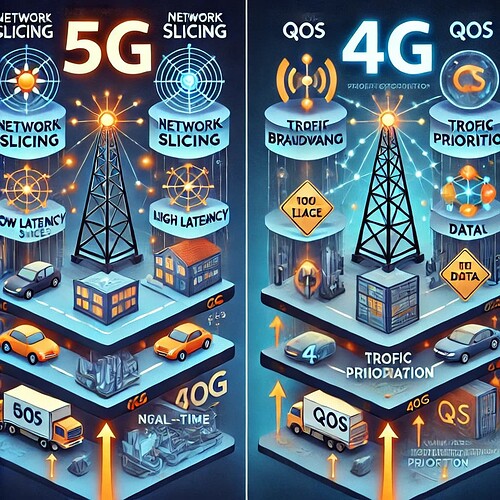Network slicing in 5G and Quality of Service (QoS) in 4G are distinct concepts, though both focus on ensuring a good user experience.
-
Network Slicing in 5G: This enables the creation of multiple virtual networks over a shared physical infrastructure, each with specific features like bandwidth, latency, and security. It lets operators customize services for different needs, efficiently managing resources to boost performance.
- For example, one slice could be dedicated to autonomous vehicles, requiring low latency and high reliability, while another serves video streaming, prioritizing high bandwidth and low latency.
-
QoS in 4G: QoS manages traffic by prioritizing and allocating resources based on parameters like bandwidth, latency, and packet loss. This helps operators guarantee a consistent service level for different types of traffic, like voice or video.
- For instance, in a congested network, QoS ensures real-time voice calls receive higher priority over non-critical data traffic.
Network Slicing in 5G offers a more flexible, advanced approach by creating dedicated virtual networks, while QoS in 4G is more about managing and prioritizing traffic dynamically within the same network.
LinkedIn: ![]()
